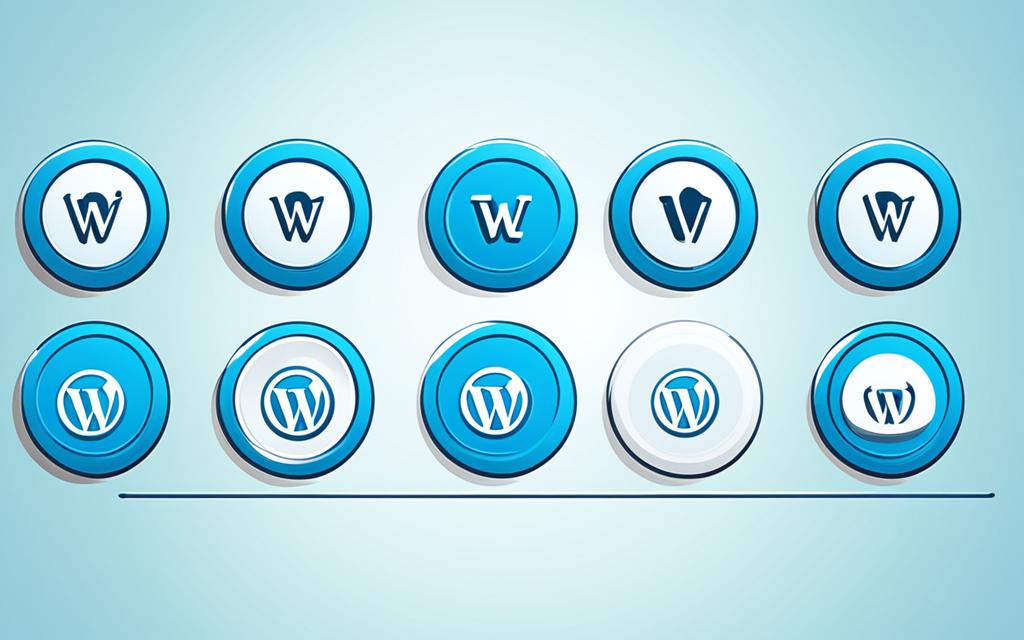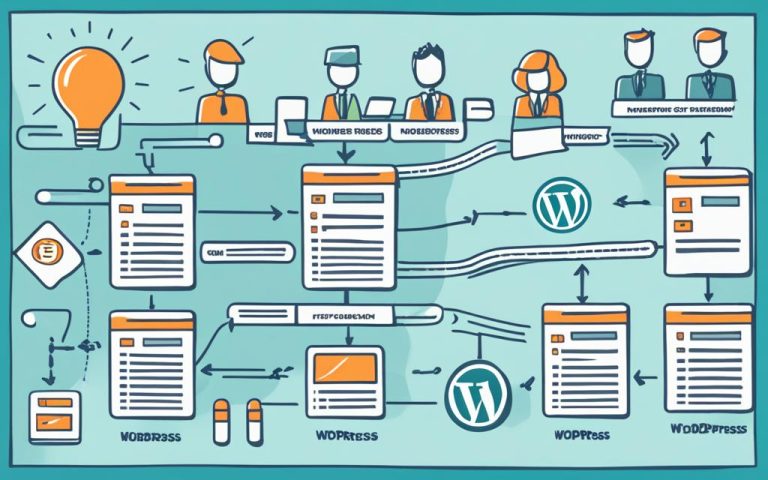Understanding WordPress Actions Explained
In the world of WordPress customization, actions and hooks play a crucial role in shaping the functionality and appearance of a website. By leveraging actions, developers can modify WordPress without directly altering the core files, providing a safe and maintainable way to create unique website features.
Actions, one type of hook in WordPress, allow developers to interact with different components of WordPress, such as themes, plugins, and custom plugins. With actions, developers can create, read, modify, or delete data, perform operations, and track user permissions, among other tasks.
Actions are registered with hooks, allowing developers to determine when and how their code should execute within the WordPress workflow. This hierarchical structure of hooks ensures that actions are performed in a specific order, providing flexibility and control over website customizations.
Whether you’re a seasoned WordPress developer or just starting, understanding actions and hooks is essential for customizing your WordPress website to meet your unique needs. By harnessing the power of actions, you can unleash the full potential of WordPress and create a website that stands out from the rest.
Understanding WordPress Action Hooks
WordPress action hooks play a crucial role in extending the functionality of a WordPress website. These predefined points in the WordPress runtime allow developers to register and execute custom functions, known as callback functions. By leveraging action hooks, developers can customize various aspects of a WordPress website without directly modifying the core files or affecting the overall stability of the platform.
WordPress offers thousands of native action hooks, strategically placed throughout the codebase to provide flexibility and customization options. These hooks are categorized based on their location within WordPress, allowing developers to target specific areas for modification.
When registering a callback function to an action hook, developers have the power to specify its priority. This priority determines the order in which the function will be executed relative to other functions attached to the same hook. By carefully setting the priority, developers can control the sequence of actions and ensure that their modifications take effect at the desired point in the workflow.
Additionally, callback functions registered with action hooks can accept arguments passed by the hook itself. These arguments can include valuable data such as post IDs, post objects, or update variables. The number of accepted arguments affects the available variables within the callback function, enabling developers to access and manipulate specific data relevant to their customization goals.
Understanding how to effectively use WordPress action hooks empowers developers to customize the WordPress workflow and enhance website functionality. By strategically leveraging these hooks, developers can create seamless integrations, implement dynamic features, and tailor the user experience to meet their specific requirements.
Let’s take a look at a practical example of registering a callback function with a high priority:
<?php
function my_callback_function() {
// Custom code goes here
}
add_action('my_custom_hook', 'my_callback_function', 20);
?&glt;/code>In the example above, the add_action function is used to register the my_callback_function to the my_custom_hook action hook. The priority is set to 20, indicating that the function should be executed before those registered with lower priority values.
Now, let’s dive into a practical example of a callback function accepting a post object as an argument:
<?php
function my_post_callback($post) {
// Access and modify the post object here
}
add_action('save_post', 'my_post_callback', 10, 1);
?&glt;/code>In this example, the save_post action hook triggers the execution of the my_post_callback function. The function accepts one argument ($post), which represents the post object being saved. Developers can then manipulate the post object to perform custom operations.
WordPress Action Hooks at a Glance:
| Action Hook | Description |
|---|---|
| init | Used to initialize WordPress before any template loading or processing occurs. |
| wp_head | Inserted within the <head> section of the HTML document, allows addition of scripts, styles, and meta tags. |
| wp_footer | Inserted before the closing </body> tag, allows addition of scripts or tracking codes. |
| wp_enqueue_scripts | Fires when scripts and styles are enqueued, allows modification of the enqueued files. |
| admin_head | Similar to wp_head, but specifically for the admin dashboard. |
Conclusion
Understanding WordPress actions and hooks is crucial for developers who want to enhance the functionality and customize their WordPress websites. With actions, developers can modify or add features without directly altering the core files, ensuring code safety, maintainability, and compatibility with WordPress updates and plugins.
By utilizing the hierarchical structure of hooks and comprehending hook priority and callback accepted arguments, developers can take control of the execution order of actions. This allows them to customize actions according to their specific requirements, resulting in powerful and customizable WordPress websites that meet their clients’ unique needs.
WordPress’s extensibility and customization options make it a versatile platform for a wide range of websites and applications. With a strong understanding of actions and hooks, developers can unlock the full potential of WordPress development, creating websites that are tailored precisely to their clients’ expectations.
FAQ
What are WordPress actions and hooks?
WordPress actions are powerful customization tools that allow developers to modify the functionality and appearance of a WordPress website without directly modifying the original files. Hooks are predefined points in the WordPress runtime where custom functions, called callback functions, can be registered and executed.
Why are actions and hooks important in WordPress development?
Actions and hooks are important in WordPress development because they provide a way to extend the website’s functionality and customize the WordPress experience. They allow for code safety, maintainability, and compatibility with WordPress updates and plugins.
How do actions and hooks work together?
Actions are registered with hooks, and developers can add callback functions to these hooks. The hooks determine the order in which the actions are executed, and the callback functions can accept arguments passed by the hook. By understanding hook priority and callback accepted arguments, developers can control the execution order of actions and customize them according to their specific needs.
Can actions and hooks be used to create, read, modify, or delete data?
Yes, actions and hooks can be used to create, read, modify, or delete data in WordPress. They can perform various operations, track user permissions, and more, allowing developers to build almost any website feature.
Do actions and hooks affect the safety and maintainability of WordPress websites?
Yes, actions and hooks contribute to code safety and maintainability by avoiding modifications to core files. This ensures that the website remains stable and compatible with future WordPress updates.













